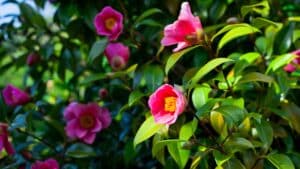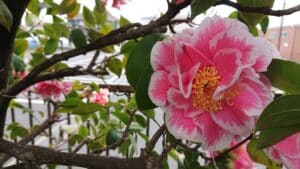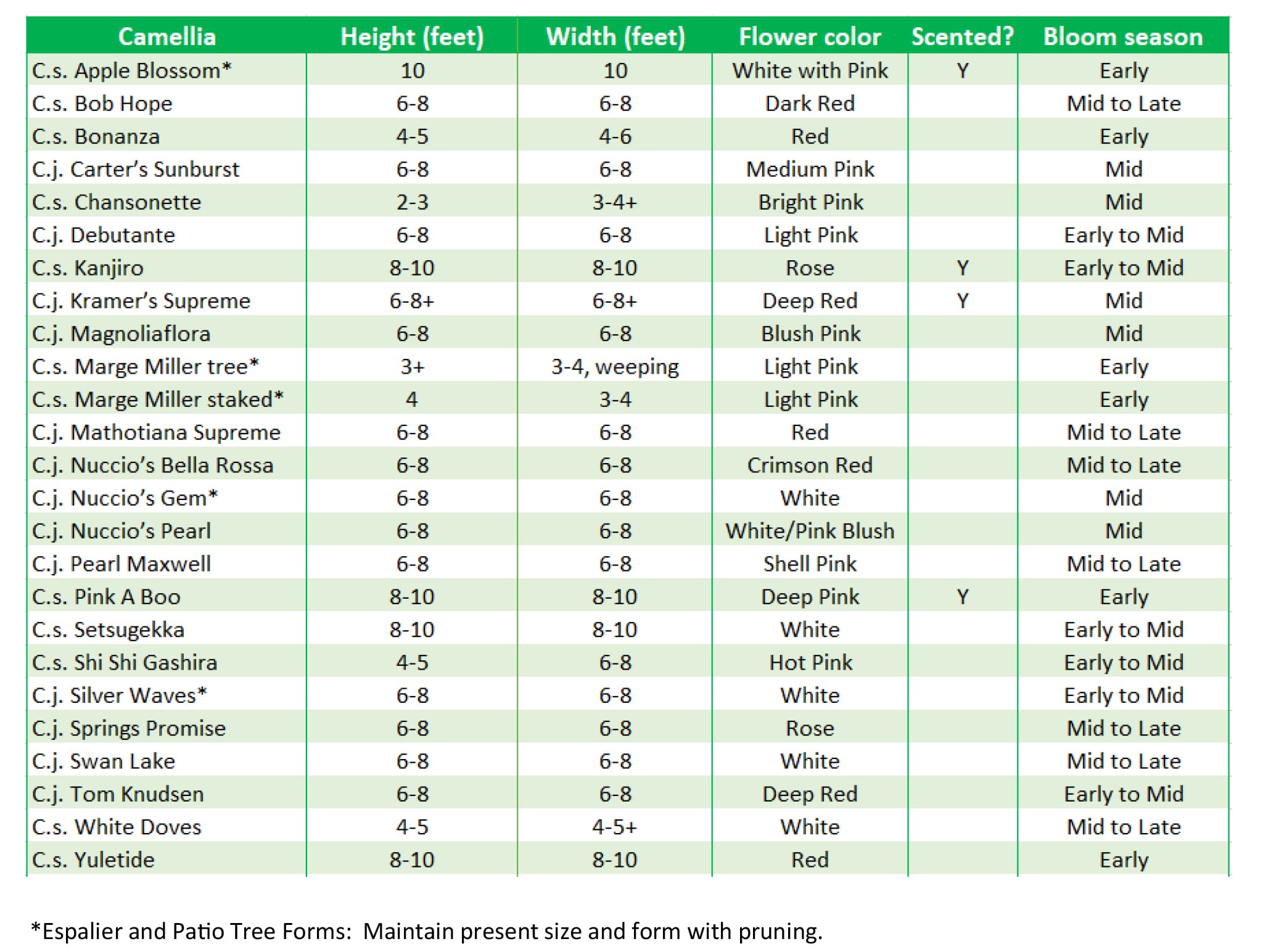
Camellias for North Florida
Camellias make excellent plants for North Florida landscape designs flowering Autumn through Winter, at a time of year when few other shrubs are at their peak. Camellias the queen of winter flowers that with their variety of forms, evergreen leaves, and low maintenance needs, camellias shine even when they’re not in flower. There are about 2,300 camellia cultivars listed with the American Camellia Society and over an estimated 30,000 varieties worldwide. “There are ten camellia species in total, with the species camellia japonica often referred to as representative of the entire genus,” according to Plantura Magazine. “Originally from the far East, camellias (Camellia) are an absolute eye-catcher in any garden. In the beginning, they were not cultivated as ornamental plants, but for the production of black and green tea and therefore belong to the family of tea plants (Theaceae).”

The two main camellia types we grow in North Florida are Camellia sasanqua and Camellia japonica. Japonica camellias are generally larger, have larger leaves and flowers, and bloom later in the season from January to March. The sasanquas typically bloom from October to December, and can handle more sun. There are six flowering forms of camellias to choose from including single, semi-double, Anemone form, Peony form, Rose form double, and Formal double.
To promote healthy growth and vibrant blooms, fertilize your camellias in spring after their flowers have finished. Apply a specifically formulated, acidic fertilizer designed for these acid-loving plants. If, during the growing season, you observe slow growth or a decline in foliage health, indicated by a loss of vibrant green color and thinning leaves, a supplemental feeding in late spring or mid-summer may be beneficial.
Click Here for this guide as a PDF.

From our office in Atlantic Beach and satellites throughout Northeast Florida, Rockaway Inc proudly serves both commercial and residential landscape design, maintenance, lawn care, irrigation, and outdoor living carpentry client needs in Jacksonville, St Augustine, Atlantic Beach, Neptune Beach, Jacksonville Beach, Ponte Vedra, Nocatee, St. Johns, and Fernandina Beach.
